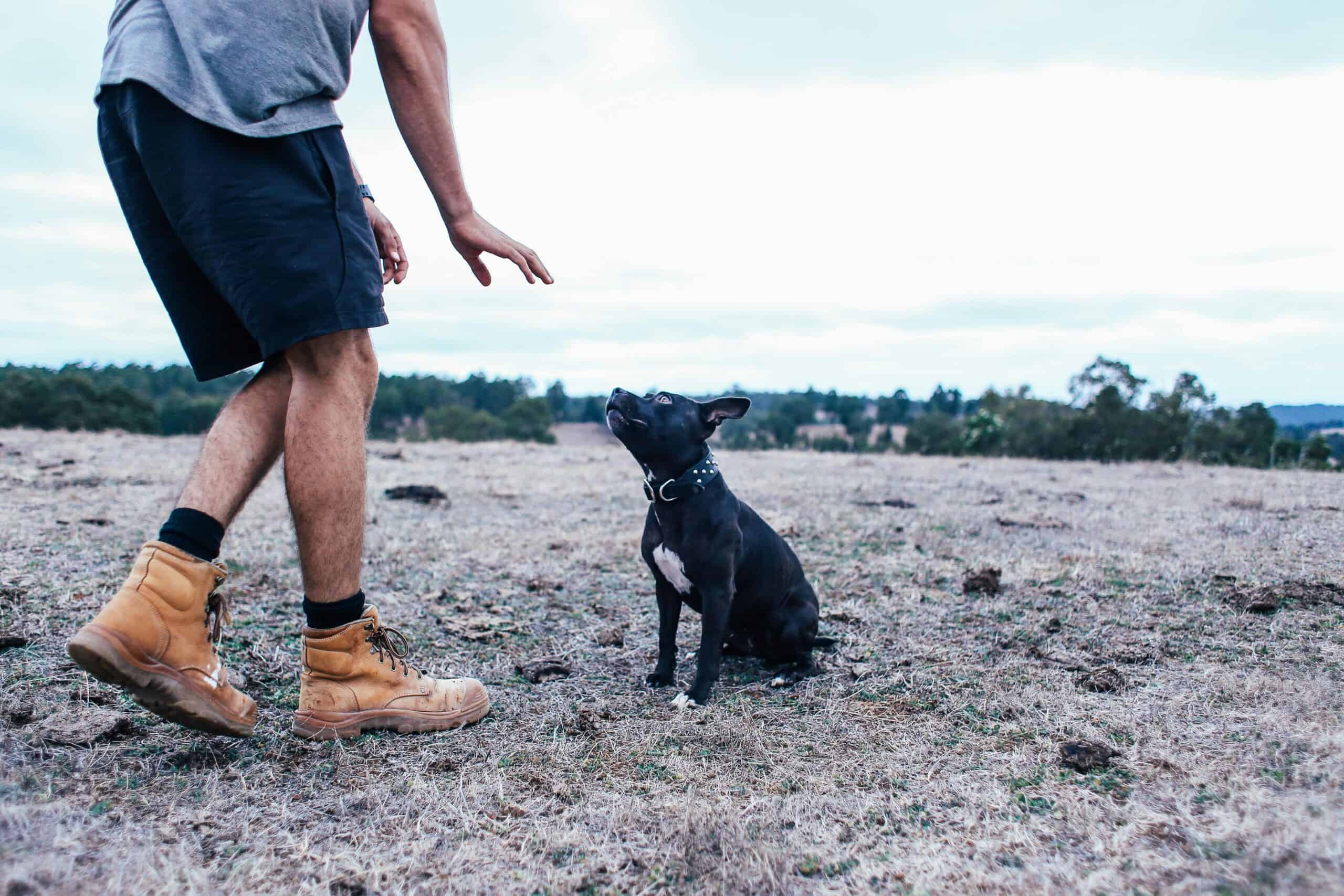The Hardest and Easiest Tricks to Teach Dogs
Posted by Lora Shaw on January 6, 2025

How to Teach Your Dog New Tricks: Key Takeaways
- The Hardest Tricks to Teach Dogs: Tricks such as rolling over, playing dead, backing up, speaking on command, and heeling are challenging due to the high levels of focus, coordination, and physical ability they require.
- The Easiest Tricks to Teach Dogs: Commands like sit, leave it, paw, stay, come, and down are generally easier for dogs to learn, as they align with natural behaviors and instincts.
- Teaching Tricks to Specific Breeds: There are some dog breeds typically more adept at learning difficult tricks due to their intelligence, focus, and trainability.
- Key Training Tips: Utilizing positive reinforcement, maintaining patience, and keeping training sessions short and engaging are essential strategies for effectively teaching both simple and complex tricks to dogs.
- Want to Teach Your Dog Some Tougher Tricks? Some dogs can master impressive, complex tricks, which require advanced training and a strong bond between the dog and owner.
Teaching your dog new tricks is a fun and rewarding way to bond with your furry friend. While some tricks are easy for most dogs to pick up, others require more patience and practice. From standard commands to more interesting and fun tricks, the difficulty can vary depending on the dog and the breed, and some dogs may excel at certain tasks while others might need extra time and effort.
Whether you’re hoping to teach your dog basic commands or aiming to accomplish more complex tricks, understanding which ones are the easiest and hardest can help guide your journey!
The Hardest Tricks to Teach Dogs
Certain tricks challenge dogs more than others, requiring higher levels of focus, coordination, and sometimes even physical ability. These tricks often involve complex movements or behaviors that take time to master, especially for younger dogs that are still learning the ropes.
Some of the hardest tricks to teach dogs include:
- Roll over – To be successful, a dog must learn to roll completely over, which requires flexibility, balance, and coordination
- Play dead – This trick involves a dramatic “dead” pose, which can be tough for dogs to master as it requires them to remain still and stop their natural energy
- Back up – Teaching a dog to move backward on command goes against their natural instincts to move forward, requiring extra focus and patience
- Speak and quiet – Training a dog to bark on command and stop barking when told to requires control over a natural behavior, which can be challenging for excitable dogs
- Heel – Getting a dog to walk in perfect sync with you without pulling on a leash can be difficult, especially for high-energy dogs who want to explore
- Fetch specific items – Taking things a step beyond simple fetching, a dog must differentiate and fetch specific objects by name, requiring both recognition and memory skills
Dog Breeds That Typically Can Learn the Hardest Tricks
Certain dog breeds excel at learning difficult tricks due to their intelligence, focus, and calm demeanors. These traits, along with strong memories and the ability to stay still, make them well-suited for mastering complex tasks that require precision and patience.
Some dog breeds that are typically able to learn the hardest tricks include:
- Border collie – Known for their intelligence and trainability
- Poodle – Highly intelligent and eager to please
- German shepherd – Also known for intelligence and a strong work ethic
- Golden retriever – Friendly, eager to please, quick to learn
- Belgian Malinois – Focused and highly trainable
- Doberman pinscher – Intelligent, alert, and precise in learning
The Easiest Tricks to Teach Dogs
While some tricks require a lot of patience and practice, many exist that are easier for most dogs to learn. These tricks typically involve simple actions or behaviors that align with a dog’s natural instincts, making them quicker and easier to grasp. With consistent training and positive reinforcement, your dog should be able to master these tricks in no time.
Some of the easiest tricks to teach dogs include:
- Sit – This is a natural behavior that dogs instinctively perform, so getting them to do it on command isn’t too difficult. Breeds like Labrador retrievers and golden retrievers are especially quick to learn this simple command due to their eagerness to please.
- Leave it – A straightforward command that involves redirecting a dog’s focus from an object, and one which many dogs learn easily. Dobermans and golden retrievers excel at this trick because of their high trainability and attentiveness to their owners.
- Paw – This is a simple movement that dogs will easily learn through repetition. Breeds such as poodles and border collies often excel at this trick because of their high intelligence and aptitude for quick learning.
- Stay – Most dogs can quickly grasp this basic command with minimal effort. German shepherds and boxers are known for their focus and ability to remain still, making this trick relatively easy for them to master.
- Come – Dogs respond to this command because of their natural curiosity and desire to follow. Beagles and Australian shepherds are often quick to come when called due to their natural instincts to stay close to their owners.
- Down – Since dogs perform this behavior naturally, teaching the command for it is fairly easy. Cocker spaniels and bulldogs are good at learning this trick because of their calm and laidback nature.
The Most Complex and Fun Tricks People Have Taught Their Dogs
Dogs are capable of learning some truly impressive and intricate tricks, and many dog owners love to challenge their pets with fun and complex tasks. These tricks not only require patience and dedication but also showcase the deep bond between a dog and their owner.
Here are some of the most complex and interesting tricks people have taught their dogs:
- Playing the piano – Certain breeds, like border collies or poodles, have been taught to press piano keys, creating fun melodies. This trick involves complex coordination and a good understanding of timing.
- Opening doors – Some dogs have learned to open doors with their paws or mouths. This is a trick that requires a combination of strength, coordination, and problem-solving skills.
- Dancing – Dogs can learn to perform dance routines with their owners, often involving spins, twirls, and even jumping through hoops. This trick combines agility, coordination, and precise timing.
- Tidying up – Some dogs are trained to pick up their toys and put them away in a designated spot such as their dog bed, crate, or play pen. This involves a combination of organization and the ability to follow multi-step commands.
Tips for Teaching Your Dog Tricks at Home
As you begin to introduce either complex or easy tricks at home, here are some tips for you to keep in mind as you proceed:
- Start with the basic commands
- Be patient
- Train during playtime
- Use positive reinforcement
- Keep sessions short and fun
- Be consistent with commands
- Practice regularly
- Don’t overload your dog
- Use rewards
- Use hand signals
- Break tricks into smaller steps
- Be clear with your commands
- Create a distraction-free environment
- Use clicker training
- Stay calm and positive
- Use a leash for control
Additionally, if your dog tends to have a lot of energy, a short burst of exercise before training can help to calm them and reduce distractions. However, please avoid over-exercising as you still want your dog to remain focused and ready to learn!
Choose Pet Palace for Dog Training
Needing extra assistance teaching your dog new tricks? Pet Palace is here to help! Our expert trainers provide personalized dog training services at our Cary, Pittsburgh, and Columbus locations.
We look forward to helping guide you and your furry friend every step of the way in this process of learning new tricks! If you have any questions about our training or the scheduling process, feel free to get in touch with our team of professionals.

Categories: Dogs, Tips for Your Pets
Archives
Recent Articles
Categories
Monthly Archive
- May 2025
- April 2025
- March 2025
- February 2025
- January 2025
- December 2024
- November 2024
- October 2024
- September 2024
- August 2024
- July 2024
- June 2024
- May 2024
- April 2024
- March 2024
- February 2024
- January 2024
- December 2023
- November 2023
- October 2023
- August 2023
- July 2023
- June 2023
- May 2023
- April 2023
- March 2023
- February 2023
- January 2023
- December 2022
- November 2022
- October 2022
- August 2022
- July 2022
- June 2022
- April 2022
- March 2022
- February 2022
- November 2021
- October 2021
- November 2020
- September 2020
- July 2020
- March 2020
- January 2020
- November 2019
- September 2019
- July 2019
- March 2019
- January 2019
- December 2018
- November 2018
- October 2018
- August 2018
- July 2018
- June 2018
- May 2018
- April 2018
- March 2018
- February 2018
- January 2018
- December 2017
- November 2017
- October 2017
- September 2017
- August 2017
- July 2017
- June 2017
- May 2017
- April 2017
- March 2017
- February 2017
- January 2017
- December 2016
- November 2016
- September 2016
- August 2016
- July 2016
- June 2016
- May 2016
- April 2016
- March 2016
- February 2016
- December 2015
- November 2015
- October 2015
- September 2015
- August 2015
- July 2015
- May 2015
- March 2015
- February 2015
- January 2015
- December 2014
- November 2014
- September 2014
- August 2014
- July 2014
- June 2014
- May 2014
- March 2014
- February 2014
- January 2014
- December 2013
- November 2013
- October 2013
- September 2013
- August 2013
- June 2013
- May 2013
- March 2013
